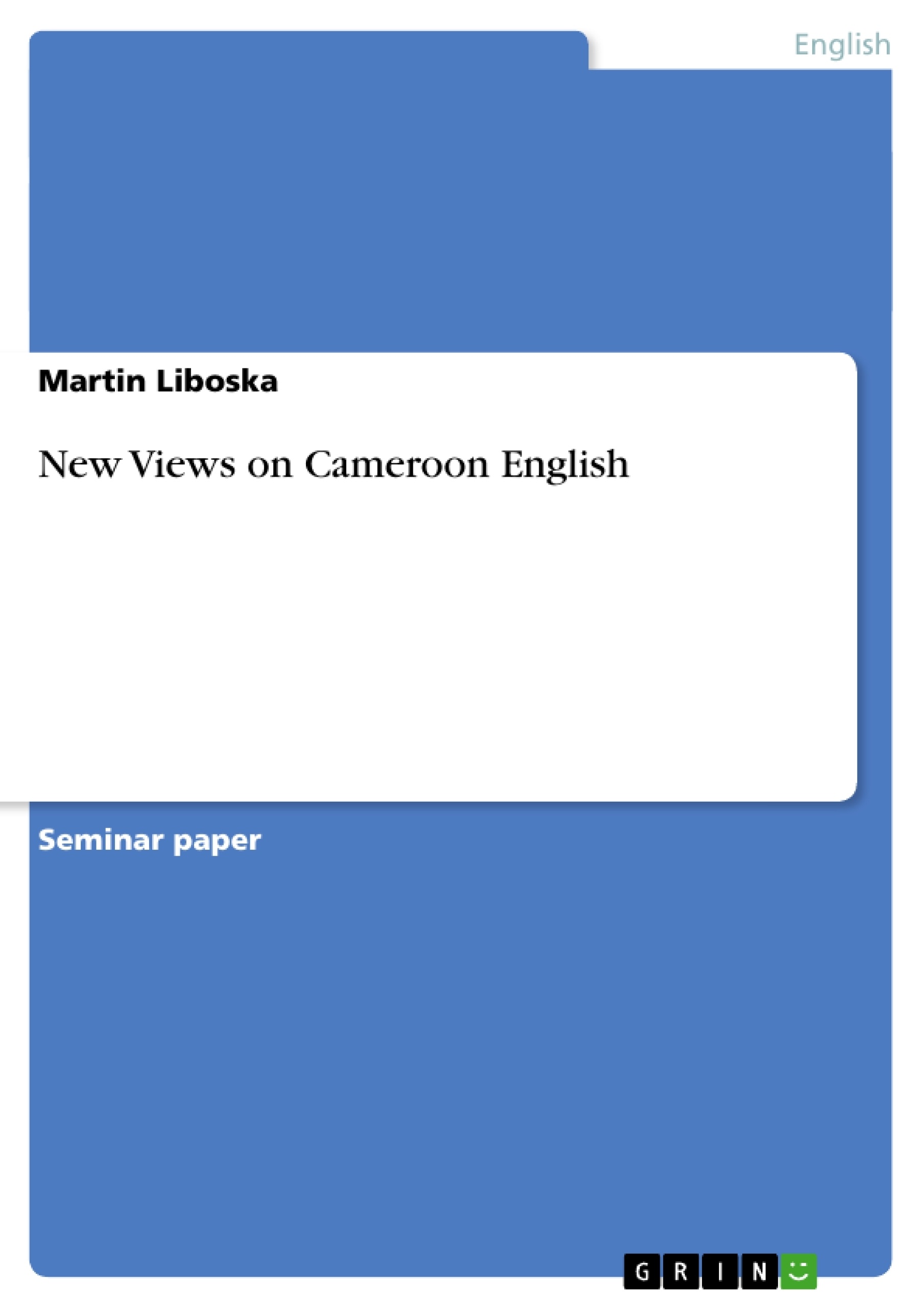Excerpt
Contents
1. Introduction
2. The state of knowledge about “English in West Africa” before the year 2000
2.1 The complex linguistic situation in West Africa
2.1.1 The status of English in West Africa
2.1.2 The function and use of English in West Africa
2.2 The varieties of English in West Africa
2.2.1 West African Pidgin and Creole English
2.2.2 Standard West African English (WAE)
3. New views on Cameroon English: distinct national variety of English?
3.1. The sociolinguistic situation in Cameroon and the Anglophone speech community
3.1.1 The de facto status of English in Cameroon
3.1.2 The Anglophone speech community
3.1.3 Cameroon English: a symbol of Anglophone “identity”
3.2 Lexical peculiarities of CamE
3.2.1 Frenchification of the lexicon of CamE
3.2.2 Nativization of Cameroon English
3.2.3 Contextualization
4. Conclusion
Appendix
References
1. Introduction
English in West Africa is a complex field of investigation in the broader context of the “World Englishes”. For many years, researchers have focused on linguistic characteristics of the numerous varieties of English in this area and mostly subsumed them under the label “English in Africa” or “West African English” (WAE) (e.g., Spencer 1971; Todd 1984b; Kachru 1995, Schmied 1991). Only little attention has been paid to the single national varieties[1] including Cameroon English (henceforth CamE), which is in fact a very interesting case for sociolinguistic analysis due to its status as a co-official language beside French in a multilingual environment. This paper aims to show that new approaches to the national West African varieties, in this case CamE, try to fill the gap of comparative research in this linguistic area. The first part of this paper shall introduce the reader to the complexity of the linguistic situation in West Africa in general. The status, function, and use of English in the anglophone West African countries will be determined in chapter 2. Then I will give an overview about the development of the two most important varieties of English spoken there, namely Pidgin English (PE) and WAE. This chapter will therefore serve as a basis of knowledge for the third chapter, which is the main part of this paper and deals with the new approach of Hans-Georg Wolf (2001) to “English in Cameroon”. By showing the results of the author’s study about the extraordinary sociolinguistic situation in Cameroon on the one hand and the lexical peculiarities of CamE on the other hand, I will support his main thesis, which classifies CamE as a distinct national variety within the linguistic region of West Africa. Finally, I will draw a conclusion and give proposals for further studies in this field of investigation.
2. The state of knowledge about “English in West Africa” before the year 2000
The English language in West Africa is present in a continuum of forms ranging from native-like English, via local second language varieties to Pidgin English or Creoles. In Gambia, Sierra Leone, Liberia, Ghana, Nigeria, and Cameroon, English is mostly spoken as an L2 (cf. Gramley and Pätzold 1992: 423-25). Still in Liberia, a state created for repatriation of freed black slaves from America, English is the first language for about 20% of the population (US.G.CIA 2003a, online). Apart from native and second language English, Pidgin English is a widespread lingua franca. This former language of trade is used in many varieties along the coast in all six West African countries (cf. Gramley and Pätzold 1992: 423). Furthermore, Pidgin English has become creolized in some areas. In Sierra Leone, for example, Krio, an English-based creole, is an L1 for 10% of the population and 95% of the remainder understand this official language (US.G.CIA 2003b, online). The linguistic complexity of anglophone West Africa and its most important English varieties will be described in the following sections.
2.1 The complex linguistic situation in West Africa
West Africa is with its estimated 1000 or more indigenous languages one of the most linguistically complex regions in the world (cf. Todd 1982b: 281). The exact number of languages in the six anglophone West African countries is unknown because of difficulties in classification of languages and dialects[2]. However, the Ethnologue (Grimes, B. (ed.) SIL 2004a-f, online) lists 471 languages for Nigeria, 282 for Cameroon, 34 in Liberia and in Ghana, 23 in Sierra Leone, and 13 for Gambia. On top of all the indigenous languages the colonial languages, i.e. English, French and Portuguese, have been superinduced in the former colonies. English has become the most important second language in West Africa and is usually referred to as West African
English (WAE) or Standard West African English (StWAE) (cf. Gramley and Pätzold 1992: 424f.; Todd 1982b: 287f.; Schmied 1991: 60f.). The following two sections describe the status of the English language in the six anglophone states on the one hand, and its function and use on the other hand.
[...]
[1] Nigerian English is an exception, because Nigeria’s great dominance in terms of population makes this variety the prototype of WAE (cf. Wolf 2001: 42)
[2] For a detailed discussion of methodological difficulties in the classification of languages and dialects see Wolf 2001: 149f.
- Quote paper
- Martin Liboska (Author), 2004, New Views on Cameroon English, Munich, GRIN Verlag, https://www.grin.com/document/29650
Publish now - it's free






















Comments